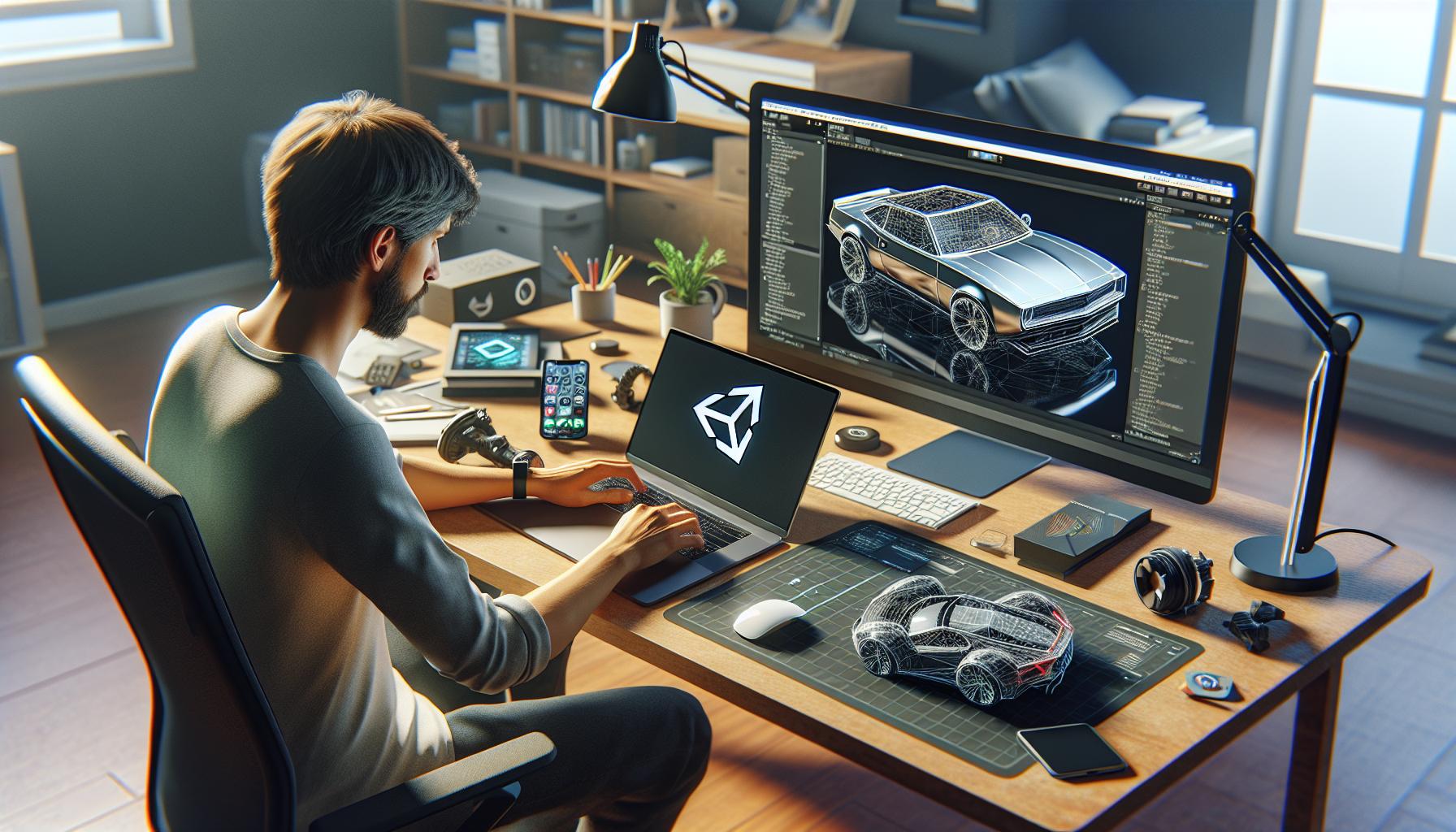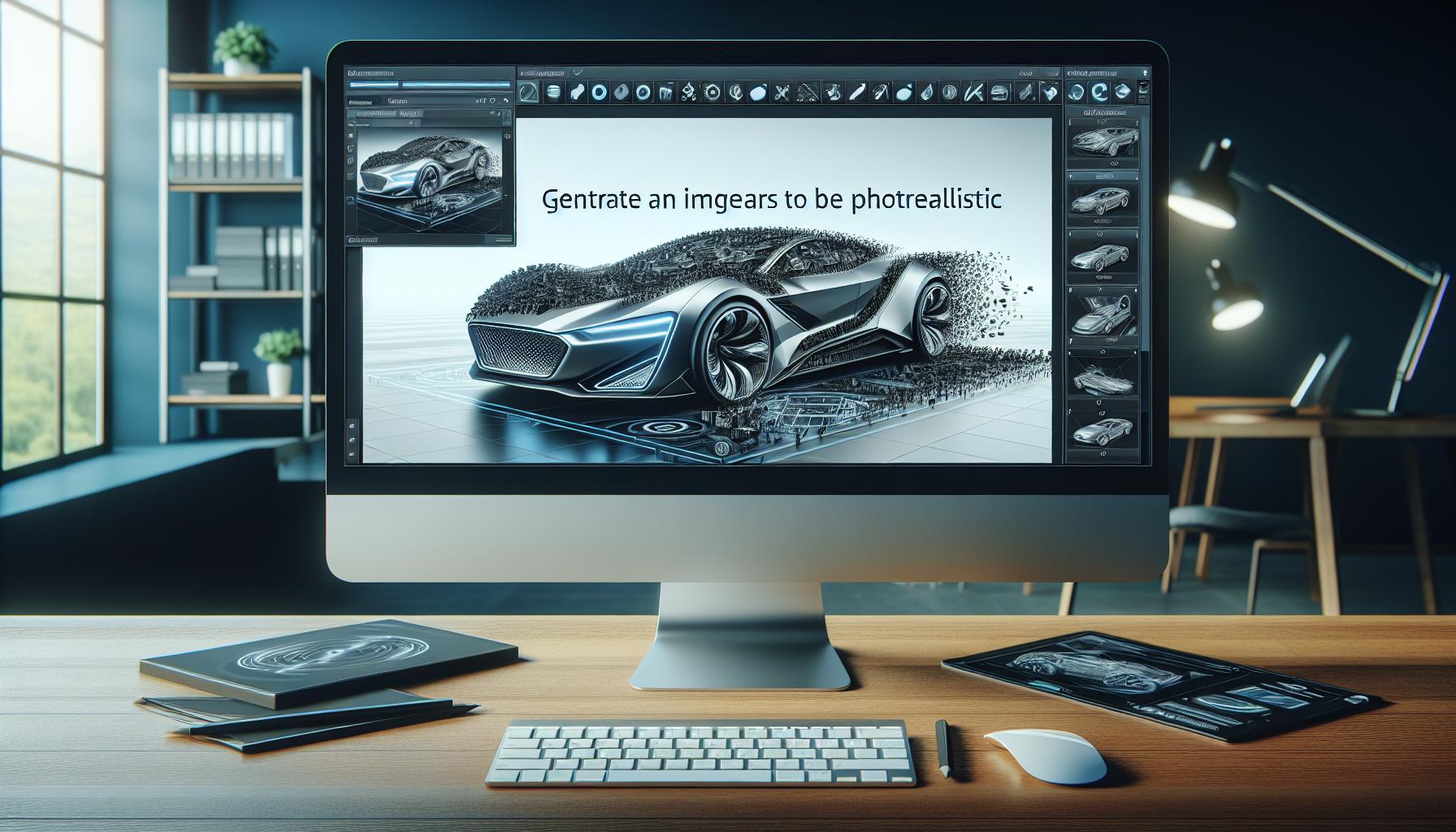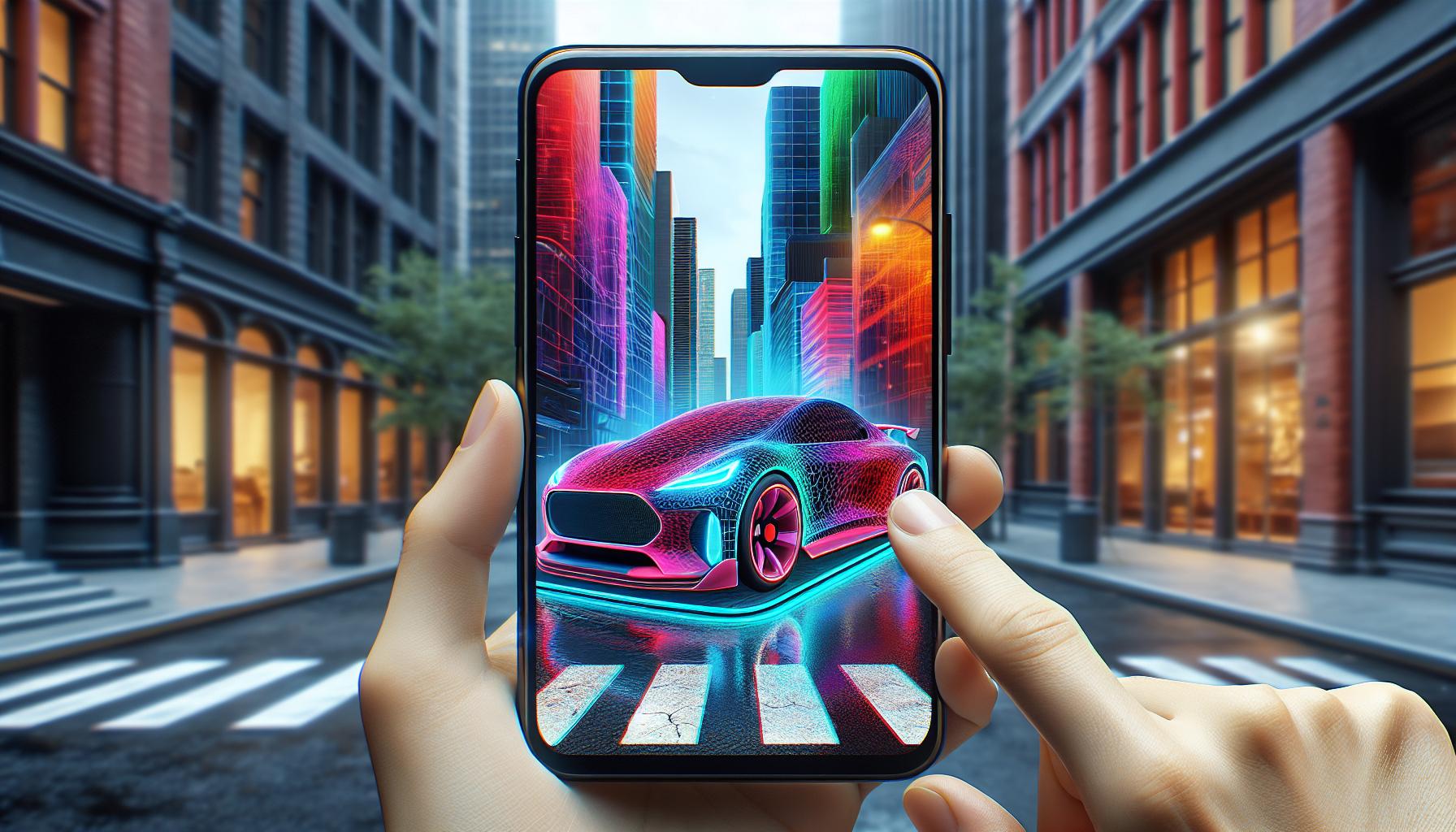Imagine zooming through your living room in a sleek, virtual car, dodging furniture like it’s a high-stakes video game. With ARKit and Unity, that dream can become a reality. These powerful tools let developers create immersive augmented reality experiences that not only entertain but also revolutionize the way we interact with our surroundings.
Arkit and Unity: Build A Drivable Car in Augmented Reality Videos
ARKit and Unity work together to create exceptional augmented reality experiences. These tools empower developers to build engaging applications that blend the digital and physical worlds effectively.
What is ARKit?
ARKit is Apple’s framework for developing augmented reality applications. It combines device motion tracking, camera scene capture, and advanced scene processing. Developers utilize ARKit to create immersive experiences that leverage the iPhone and iPad’s capabilities. Spatial awareness enhances user interactions with virtual objects, making them appear as a natural part of the environment. For instance, ARKit allows users to place a virtual car in their living room and drive it around.
What is Unity?
Unity is a versatile game development platform widely used for building 3D applications. Its robust environment supports various operating systems, including iOS and Android. Developers appreciate Unity’s ability to create optimized AR experiences through its rich asset library and scripting capabilities. By integrating ARKit with Unity, developers can design interactive environments where users engage with virtual elements seamlessly. The collaboration of these two technologies greatly enhances the overall user experience.
Setting Up Your Development Environment

Setting up the development environment involves selecting the right software and following specific installation steps. Proper preparation ensures a smooth workflow while building an augmented reality experience.
Required Software and Tools
Developers need both ARKit and Unity to create a drivable car in augmented reality. iOS devices support arkit and unity: build a drivable car in augmented reality videos, requiring macOS with Xcode installed for application deployment. Unity must be downloaded, ideally with the latest version compatible with ARKit SDK. Additional tools like Visual Studio or JetBrains Rider enhance coding capabilities. Optional plugins, such as ARFoundation, simplify the integration process, providing essential functionalities for AR development.
Installation Steps
Begin by downloading Unity from the official website. During installation, choose the modules appropriate for iOS development, including the iOS Build Support. Next, install Xcode from the Mac App Store to ensure the necessary frameworks and libraries are available. After setting up Unity, create a new project and import the ARKit package. Follow this by configuring the project settings for iOS deployment. Complete the setup by testing your environment to verify all tools integrate seamlessly, ready for development of a drivable AR car.
Building the Drivable Car Model

Creating a drivable car model involves several steps. The process starts with designing the car in Unity, followed by importing 3D models for added realism.
Designing the Car in Unity
Designers use Unity’s intuitive interface to create the car model. Customization options are plentiful, including shapes, colors, and textures. Tools like ProBuilder help shape the geometry, while materials define the look and feel. It’s crucial to ensure the model is optimized for performance. Reducing polygon count enhances the experience in augmented reality. Using Unity’s built-in physics engine allows for realistic interactions within the environment. Designing with both aesthetics and functionality in mind ensures the car is visually appealing and performs well.
Importing 3D Models
Importing 3D models into Unity enhances the car’s appearance. Designers can use formats such as FBX or OBJ for compatibility. The Asset Store provides a range of pre-made models ready for use. After downloading, importing the models requires simple drag-and-drop actions into the Unity project. Correct scaling and positioning are essential for accurate representation in AR. Materials and textures can be adjusted post-import to fit the desired style. Applying these changes creates a cohesive look consistent with the AR environment.
Implementing Augmented Reality Features

ARKit enables developers to create engaging augmented reality experiences. This Apple framework offers robust tools for tracking device motion, capturing camera scenes, and processing complex visual aspects. Importantly, ARKit provides environmental understanding, letting virtual cars interact with real-world surfaces. Developers can utilize features like hit-testing to determine where virtual objects should appear, enhancing realism. By combining these elements, users can seamlessly navigate virtual cars within their physical surroundings.
Using ARKit for AR Experiences
ARKit’s session management plays a key role in maintaining a stable augmented reality environment. It tracks the user’s movements and adjusts the virtual camera perspective in real-time. Developers must initiate an AR session, configuring settings based on project requirements. With features such as plane detection, users can drive virtual cars over identified surfaces. Implementing ARKit’s light estimation capabilities enhances visual realism by adjusting the car’s appearance according to ambient light conditions. The integration of these features results in a more immersive experience for users.
Adding Controls for the Drivable Car
Adding intuitive controls significantly enhances the user experience for driving a virtual car. Developers can implement touch-based controls using Unity’s event system for mobile platforms. Steering can be controlled by dragging a finger left or right on the screen. Additionally, customizable buttons can manage acceleration and braking, providing a realistic driving interface. Utilizing Unity’s physics system allows for the simulation of realistic car dynamics and responses to user inputs. Fine-tuning control responsiveness ensures users feel in command of their virtual vehicles, contributing to overall immersion.
Testing and Debugging Your Project
Testing and debugging your AR project ensures a smooth user experience. Efficiency in this process significantly enhances overall performance.
Common Issues and Solutions
Developers often encounter issues such as tracking loss or rendering problems. Tracking loss can occur in low-light environments; optimizing lighting conditions typically resolves this. Rendering problems might arise due to incompatible materials. Converting to ARKit-friendly shaders often leads to better compatibility. Debugging tools within Unity, like the Console window, help identify scripting errors, allowing quick fixes. Ensuring all 3D models meet ARKit requirements also aids in addressing common concerns.
Optimizing Performance
Optimizing performance is crucial for seamless AR experiences. Reducing polygon counts in 3D models helps maintain frame rates. Developers should also utilize Unity’s occlusion culling, preventing offscreen objects from rendering. Streaming textures at lower resolutions enhances load times while retaining visual quality. Additionally, limiting the number of active lights in the scene can yield significant performance gains. Regular profiling using Unity’s built-in tools offers insights into bottlenecks, allowing targeted optimizations for a smoother application.
Sharing Your Augmented Reality Video
Sharing augmented reality videos enhances user engagement and showcases creativity. Recording the experience captures moments and allows for easy sharing with friends and social media.
Recording the Experience
Recording AR experiences can occur directly through your development tools or using device features. Screen recording software integrated with Unity can provide a high-quality capture of interactions. A user can press the record button while navigating the virtual car, ensuring all actions are documented. Higher frame rates contribute to smoother playback. In addition, managing screen resolution helps achieve the desired visual quality. Always check for permission settings if sharing publicly on platforms. Also, consider including audio commentary to enrich the viewer’s understanding.
Promoting Your AR Video
Promoting AR videos effectively increases visibility and attracts an audience. Sharing on platforms like YouTube, Instagram, and TikTok can generate significant interest. Engaging with online communities focused on AR helps to reach a targeted audience. Utilizing hashtags such as #AugmentedReality, #ARKit, and #UnityGameDev increases discoverability. Collaborating with influencers can amplify outreach, while posting teaser clips captures attention. Encouraging viewers to share videos fosters interaction and builds a supportive community. Tracking viewer engagement through analytics informs future content strategy.
Engaging Augmented Reality
The combination of ARKit and Unity opens up exciting possibilities for creating engaging augmented reality experiences. By enabling developers to build a drivable car in a virtual space, users can interact with their surroundings in innovative ways.
With the right tools and techniques, anyone can transform a simple idea into an immersive reality. The journey from concept to execution involves careful planning and execution but offers immense rewards in user engagement and creativity.
As AR technology continues to evolve, the potential for dynamic applications will only expand. Embracing these advancements can lead to groundbreaking projects that redefine how users experience the world around them.



